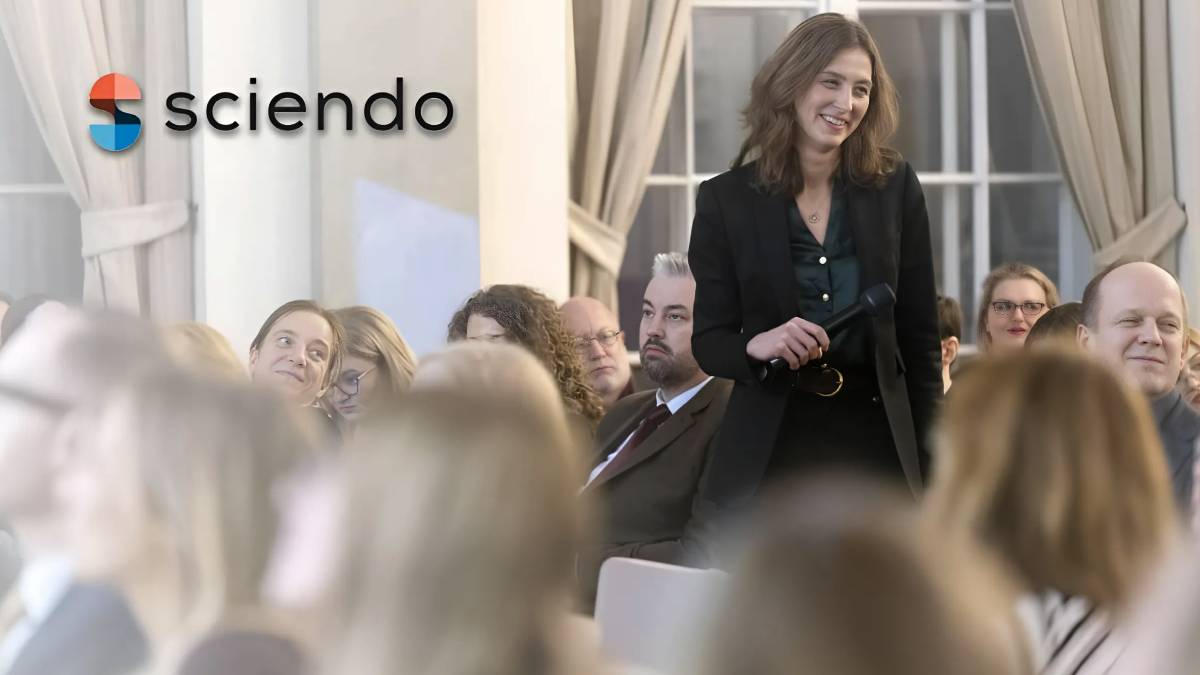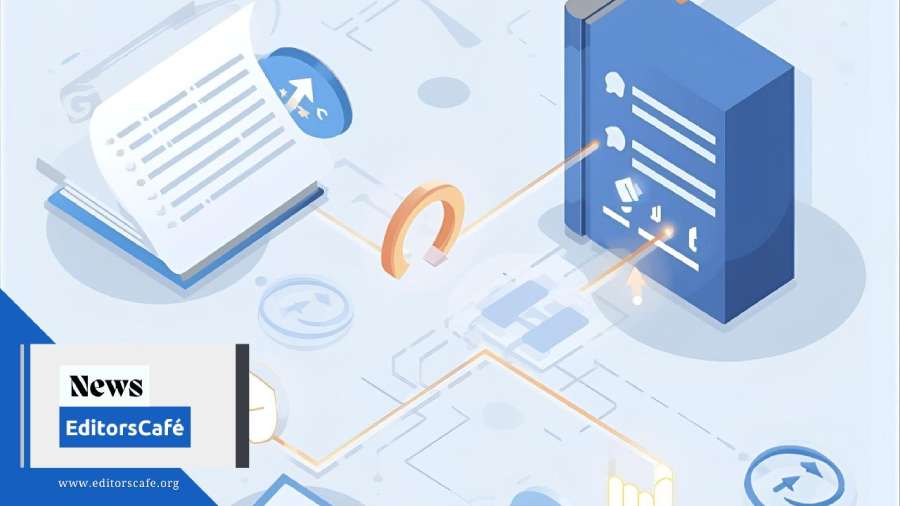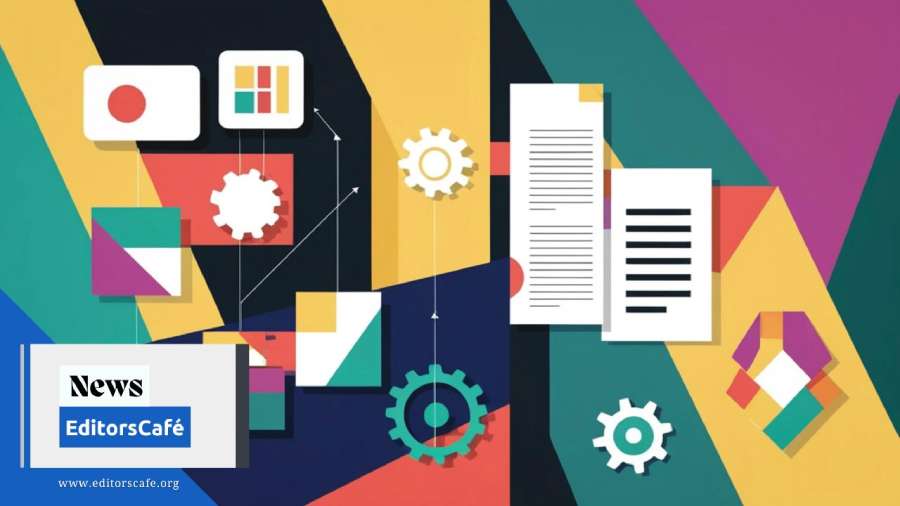Comments
Saad A. El-Sayed
02 January, 2025Although the peer review procedure is essential for confirming scientific findings, it has a number of serious issues. Improper and prolonged assessments are caused by discrimination and an absence of diversity, sluggish operation speeds, and disparate reviewer criteria. Every day, we encounter a variety of difficulties. Publishers must put a lot of effort into producing information in a variety of forms in order to reach new readers and offer readily available content. Users may become overly dependent on a single source if they are limited to a single format. The target users must be better understood by publishers. It can be challenging for publishers to select their ideal users and obtain access to valid demographics in order to increase their reach and maintain an advantage over rivals. These days, some publishers prioritize cost reduction, which has an impact on the overall caliber of the publishing materials. Publishers may boost sales and give readers a great reading experience by holding themselves to high standards for quality. Adopting digital technology that can help publications remain competitive is crucial as society looks for new ways to make science accessible to all. Peer review is changing as a result of the use of technology, which improves speed as well as precision. Artificial intelligence (AI) and machine learning (ML) are being used to help with plagiarism detection, the first screening of submissions, and even the recommendation of possible reviewers according to their experience and performance history. These developments facilitate the process an
13 January, 2025
Thank you for your insightful comment! You've raised key points about peer review challenges, content accessibility, and the role of technology in publishing. At Sciendo, we provide platforms and expert guidance to help journals align with current peer review standards and technological advancements, while ensuring editorial boards retain full decision-making authority. As for integrating technology into publishing, we share your perspective on balancing innovation with ethics. Ethical use, data confidentiality, and unbiased algorithms are top priorities as we adopt these technologies.
Tony Alves
02 January, 2025
B- How can publishers and editors strike a balance between tradition and innovation?
Publishers and editors can strike a balance between tradition and innovation by integrating new technologies while maintaining core values of trust, equity, and research integrity. For example, AI tools can enhance workflows by automating peer review matching, conducting quality checks, and enabling real-time translation to broaden accessibility. However, these innovations must be guided by ethical frameworks that prioritize transparency, robust provenance tracking, and accountability to mitigate risks like biases, disinformation, and inequities in research outputs. Combining AI-driven efficiencies with established practices like persistent identifiers (PIDs) for identity verification ensures continuity while adapting to technological advancements.
Additionally, publishers can foster inclusivity and equity by adopting sustainable open access models, such as Diamond OA or Subscribe to Open, to reduce reliance on Article Processing Charges (APCs). Collaboration with global stakeholders, including underrepresented regions, helps align innovations with diverse needs. At the same time, rethinking traditional impact metrics to include datasets, protocols, and contributions to Sustainable Development Goals (SDGs) reflects a forward-looking approach while honoring the foundational goal of advancing knowledge. This blend of tradition and innovation creates a scholarly ecosystem that is both equitable and future-ready.
Tony Alves
02 January, 2025
A- What do you see as the biggest challenges in academic publishing today?
The biggest challenges in scholarly publishing stem from rapid technological advancements and systemic inequities. While AI is revolutionizing workflows and accessibility, it introduces risks like disinformation, biases, and questions around authorship and transparency. The environmental impact of AI, coupled with rising costs for open access (OA) infrastructure and integrity tools, strains smaller publishers and highlights the need for ethical frameworks, robust provenance tracking, and collaborative efforts to balance innovation with inclusivity.
Systemic inequities persist, as geopolitical shifts and unsustainable OA models marginalize underrepresented regions like the Global South. Efforts like Diamond OA, Subscribe to Open, and collaborative partnerships aim to promote equity, but disparities in funding and access remain. The push for holistic research impact metrics, emphasizing real-world outcomes and contributions to Sustainable Development Goals (SDGs), underscores the need to address these imbalances and create a more inclusive, sustainable scholarly ecosystem.
13 January, 2025
Thank you for highlighting these important points! Hearing diverse perspectives on the challenges and opportunities in academic publishing is always valuable. We appreciate your insights and look forward to further discussions on building a more equitable and innovative publishing landscape!
Saad A. El-Sayed
02 January, 2025
This the rest of my comment which posted before:
These developments facilitate the process and free up reviewers who are people to concentrate on the crucial duty of assessing the work's scientific significance. However, there are important challenges that must be solved, such as guaranteeing the moral utilization of AI, protecting confidentiality of information, and preventing biases imposed by automated systems. We welcome these technological developments, but we must balance innovation with the human component that is important to peer review.
Abdelazim M Negm
02 January, 2025
A- What do you see as the biggest challenges in academic publishing today?
It is to misuse the AI in writing and reviewing manuscripts. This should be based on well established guidelines and should not be avoided by any involved user.
B- How can publishers and editors strike a balance between tradition and innovation?
By using AI based on well established guidelines and should not be avoided by any involved user. Publishers should not increase the ARC compared to their marginal reasonable cost. Editors should be more cooperative with authors and avoid stiff behavior.
07 January, 2025
AI is truly an interesting topic in the academic world, and its rapid growth brings both opportunities and challenges. As it becomes more common, it's important for everyone to use AI responsibly and with care. However, authors, in particular, should be mindful, as it is a powerful tool that can be incredibly helpful when used ethically and transparently.
Gharib Hafizov
02 January, 2025I think the biggest problem is the stage of recesing. From my experience in submitting an article to a scientific publication, I know that competent intervention can radically improve the quality of scientific work. I've had many cases where I didn't notice the simplest flaws inmy job. After the review, you were in a state of awakening, as if someone had poured cold water on you. Therefore, an outside assessment is important. On the other hand, reviewing takes a lot of effort and time, which can be spent on your own business, but what in return? Recently, I have received several offers to act as a reviewer, including from journals affiliated with Scopus. But I didn't take them, and that didn't make me feel bad. Perhaps this is due to thoughts about the meager salary and additional salary...
13 January, 2025
Thank you for sharing your perspective! At Sciendo, we do not interfere with the decision-making process or the flow of manuscripts, as these remain entirely under the control of the editorial board. However, we strive to support both authors and reviewers by providing platforms, tools, and expert guidance. Hearing perspectives like yours helps us better understand the challenges and needs of both sides, which is invaluable in shaping our services.
Sulaiman Sani
02 January, 2025The greatest challenge is the fear to adopt and implement harmless innovative technologies in editorships and reviews so that quality is enhanced and efficiency especially time efficiency is improved. Many beautiful scientific results are taken away from owners to gladiators between true times and needless psuedo times running in the publication space today.
15 January, 2025
Implementing innovation can indeed enhance quality and efficiency while preserving the essence of scientific achievements. Thank you for sharing your thoughts
Mehran Hosseini
03 January, 2025
A- It seems that the most important challenge in this field is the stronger emphasis of commercial aspects on scientific priorities by some publishers.
B- In my opinion, this question should not be posed as a "balance between these two issues", but rather it seems that in the near future, today's conventional methods will be gradually eliminated and replaced with advanced methods that benefit from artificial intelligence and other similar technologies.
15 January, 2025
As a service provider rather than a purely commercial publisher, we focus on supporting scientific priorities by offering tailored solutions that empower researchers and institutions to achieve their goals without compromising academic integrity. We truly appreciate the variety of perspectives shared here, as they help foster a deeper understanding of the challenges and opportunities in academic publishing.
Ogbuka Josiah Chukwuemeka
03 January, 2025
What do you see as the key issues in academic publishing today?
I consider this as a very interesting and timely question considering the dynamic and complex ethical demands and expectations associated with sourcing and fulfilling publishing standards. For instance, in my institution, prioritisation of publishing in international high impact factor and specific journals indexed in selected databases puts extreme pressure on many academics to meet this tall requirement for promotion. The challenge is that most of our research outcomes have local impact and relevance, which makes them look inferior and mostly unable to meet global relevance required by these high impact factor journals. As a result, the struggle to meet this Herculean task has resulted in stagnation and frustration to many academics, which also negatively affect their performance and productivity.
How can publishers, editors, and authors navigate the balance between tradition and innovation?
This is also a worthwhile concern. I suggest that publishers, editors, and authors should articulate and implement ethical publishing principles that protects and promotes traditionally-based research, with productive and fruitful impacts, as well as encouraging innovative research and publication.
15 January, 2025
Thank you for sharing your perspective. Impact Factor undoubtedly holds significant recognition in the academic community, but it’s important to acknowledge that impactful and high-quality research can emerge from a variety of journals, regardless of their IF status. At Sciendo, we aim to support editors in achieving their goals while emphasizing sustainable approaches that highlight the true value of their work.
Worku Negash
03 January, 2025
1. As an editor in academic publishing, I face the challenge of getting responses from reviewers in the desired number and speed.
2. By combining different strategies, such as collaborating with technology experts, leveraging the benefits of digital transformation, and increasing audience engagement, publishers and editors can create a flexible and adaptable approach that respects tradition while embracing the future.
15 January, 2025
Point two truly seems like a key to success. Combining innovation with respect for tradition creates a strong foundation for adapting to the evolving landscape of academic publishing.
Wulfran FENDZI MBASSO
03 January, 2025
A- The main point to highlight is to bring more motivation to Scholars. By accepting to support to cover APC for low income countries,this will help researchers to publish their work.
B-Innovation is Always a point of perception depending on how you state your position. But the main duty of a researcher is to bring light in this World which needs novelty. So for my point of view,all research Can be taken as novel when results are giving response to at least one of the SDF
Prof.KAVINDRA NATH TIWARI
04 January, 2025I feel a major issue is the article publishing charge. Gradually, journals are moving subscriptions to open access. In several countries, like my country, there is no support from the government as well as funding agencies for APC for open access publication. It is a major challenge for poor students or even for mentors. Open access journals also do not give the opportunity to reviwers to publish a few free papers in a year. They are only waived off a limited amount, but the balance amount is too much. How to tackle this challenge?
Prof. Dr. Maan Abdul Azeez Shafeeq
04 January, 2025as well as increase the wages of reviewers in order to provide the best they have in reviewing research, as we must not forget that the financial incentive has a great impact on the progress of scientific aspects in all fields.
Prof. Dr. Maan Abdul Azeez Shafeeq
04 January, 2025In my opinion, the biggest challenge is the reliance on traditional methods used so far. Therefore, we must rely on modern innovative methods, including artificial intelligence, taking into consideration the limits permitted for the use of this modern technology. We must not forget that most Middle Eastern countries take artificial intelligence with sensitivity and place many restrictions on its use. The important thing is that many reviewers rely on old methods in reviewing research with a bias toward old information. This results in a delay in the scientific progress that we aspire to in all fields, especially scientific ones, with the sustainability of modern information. Therefore, there must be a balance between tradition and innovation as much as possible. Also, most universities in the Middle East are turning to journals that are included in the Scopus and Clarivate containers, as they aspire to raise and increase the global ranking of universities and academic institutions, knowing that the fees for publishing research in these containers are high, which is a burden on the academic without support for the publishing fees. In the case of turning to free journals, the period of publishing the research is very long, exceedingly more than a year, and this hurts academics, especially on graduate students, as their period is limited. If these obstacles and problems are overcome, we can raise the level of modern scientific publishing and keep pace with the developments occurring in the world, especially in developed countries.
17 January, 2025
Prof. Dr. Maan Abdul Azeez Shafeeq, hearing your perspective is increadibly valuable, as it highlights the complexity of these issues. Thank you for sharing your thoughts.
Prof.(Dr.) Ekbal Rashid
04 January, 2025
A - What do you see as the biggest challenges in academic publishing today?
Ans: The biggest challenge in academic publishing is Quality of research. Now a days many publishing houses are publishing sub-standard research and that should stop immediately.
13 January, 2025
Prof.(Dr.) Ekbal Rashid, thank you for highlighting this issue. This is precisely why we emphasize the importance of a rigorous and reliable peer review process it's a crucial step in ensuring credible and impactful academic publishing.
Dr. Sami Hammed Farhan
04 January, 2025
A. Biggest Challenges in Academic Publishing Today
One of the primary challenges is maintaining rigorous quality standards while ensuring inclusivity and accessibility for researchers from diverse regions and institutions with varying levels of resources. Additionally, the increasing pressure to achieve high Impact Factors can sometimes overshadow the importance of publishing innovative or niche research. The rapid advancement of technology also necessitates that publishers continuously adapt, which can be resource-intensive.
B. Balancing Tradition and Innovation
Striking this balance requires leveraging digital tools and platforms to enhance visibility and accessibility while preserving the integrity of traditional peer-review processes. Publishers and editors could embrace open access and data-sharing practices, which promote transparency and collaboration, without compromising on rigorous quality control. Innovation should be viewed as an enhancement of tradition, rather than a replacement.
Dr. Sami Hammed Farhan
04 January, 2025
A. Biggest Challenges in Academic Publishing Today
One of the primary challenges is maintaining rigorous quality standards while ensuring inclusivity and accessibility for researchers from diverse regions and institutions with varying levels of resources. Additionally, the increasing pressure to achieve high Impact Factors can sometimes overshadow the importance of publishing innovative or niche research. The rapid advancement of technology also necessitates that publishers continuously adapt, which can be resource-intensive.
B. Balancing Tradition and Innovation
Striking this balance requires leveraging digital tools and platforms to enhance visibility and accessibility while preserving the integrity of traditional peer-review processes. Publishers and editors could embrace open access and data-sharing practices, which promote transparency and collaboration, without compromising on rigorous quality control. Innovation should be viewed as an enhancement of tradition, rather than a replacement.
Misganaw Meragiaw Mollaw
04 January, 2025
Thank you for this platform, and I appreciate all of my colleagues who forwarded important comments herein. Recognition and rewards for peer reviewers are not yet sufficient. Peer reviewers provide valuable feedback on the quality of research papers and help ensure that they are suitable for publication. They also help maintain the integrity of research and keep up with the latest trends in their field. So, peer reviewers should be rewarded for their work. Compensation can encourage more professionals to review papers, which can improve the peer review system. Rewarding peer reviewers can also make peer review more attractive and motivate researchers to participate.
Zohreh Movahed
04 January, 2025
A. Challenges in Academic Publishing
Balancing innovation with ethical practices is a key challenge, especially with AI's role in peer review and plagiarism detection. Global inequities also hinder researchers in underfunded regions, while commercialization often overshadows academic priorities.
B. Balancing Tradition and Innovation
Adopting ethical AI tools, promoting sustainable open-access models, and fostering inclusivity can help navigate this balance. Collaboration among publishers, editors, and authors ensures innovation while preserving integrity and equity in academic publishing.
Dr Abhaya Balasuriya (Professor, Retired)
05 January, 2025
The present trend is becoming, more Open Access (OA) than traditional (regular) publishing. They are in business, and therefore, are in competition. If an article is rejected from one it may be possible to re-submit it to another, and keep doing that until it gets published. This may tantamount to a compromised standard of a decent scientific publication. This could be an area where artificial intelligence (AI) or machine learning (ML) could be usefully employed, in order to avoid or scale such actions down.
AI certainly can be profitably employed in plagiarism checking and the general language improvement, thus the task of reviewing is made more comfortable by the reviewer. In my own personal view, the role of an experienced reviewer is indispensable. But, to obtain such services they need to be compensated fairly. I used to do this in hundreds, but mostly voluntarily. Since at present, I am retired from regular service, a reasonable compensation for the services, when provided, would be most welcome!
On the front of APCs, it must be made variable according to the region or the nature of the organization. In certain places and organizations, though it is mandatory for those in service to have publications in journals with high impact factors, for their promotional prospects, they as authors may not have funds enough to meet the high cost of publishing in those high end journals.
These are some foods for thought!
17 January, 2025
Dr Abhaya Balasuriya, these are important points. The shift toward Open Access brings greater accessibility but also funding challenges, especially with Article Processing Charges (APCs). Balancing resources between countries and adopting flexible funding models, alongside technologies like AI, could foster equity. Supporting and fairly compensating authors and reviewers remains essential. Thank you for these valuable reflections! As a service publishing provider, we greatly value diverse perspectives that help us better support editors, reviewers, and authors.
Dr. Bhupinder Dhir
05 January, 2025Sciendo's focus on major issues such as publishing goals, quality of publications, importance of Impact factor and citation metrics, increasing dominance of commercial publishers is very valid in today's world of scholarly publishing. Increase in journal 's outreach for large audiences and better circulation are some other points that were very well addressed by Sciendo.
Owolabi, T.A
05 January, 2025
A. The most challenging aspect of publishing today is the willingness of prospective reviewers to sacrifice their time.
B. Striking a balance between publishers and reviewers should involve paying reviewers for paid journals, while non-paying journals should find alternative ways to motivate reviewers, such as issuing certificates or offering higher indexing opportunities.
Dr P A Azeez
05 January, 2025Article processing charges are a big hurdle for researchers when publishing their findings. In many cases, the authors have to raise funds from their own pockets since their organizations do not provide them.
Mona A. M. Abd El-Gawad
05 January, 2025Thank you for cooperation and thank you for this platform, Increase the wages of reviewers in order to provide the best they have in reviewing research, as we must not forget that the financial incentive has a great impact on the progress of scientific aspects in all fields. Also, high publishing prices in Scopus journals.
Brahim SAFI
05 January, 2025About APC fees: Some universities and research institutions do not have funds specifically earmarked to support open access publishing for their researchers. So, Thus, APC fees are a major obstacle for researchers when publishing their results. In many cases, authors have to find funds out of their own pockets, as their organization does not cover them.
Manal Abdalla Ibrahim
05 January, 2025
Academic publishing faces several significant challenges today, including issues related to accessibility, ethics, technology, and financial sustainability. The most pressing challenge is
accessibility and open access which encountered by high subscription costs,many academic journals are behind paywalls, making research inaccessible to those without institutional support or financial means.
While open-access publishing improves accessibility, it often shifts costs to researchers, who must pay article processing charges (APCs), creating inequalities between well-funded and underfunded institutions.
Dr Ameha Tefera Tessema
06 January, 2025
While journals consider a research article for publication on the respective journal they should critically view the research article in it's novility,publishability and
applicability in the respective industry which should be indepth look into the research article by specifically identical reviewers whose dimension of thinking wider than the knowledge of the research considered for publication since the defect in selection, considering and reviewing the research article will symetaniusly lay down the journal under insistency believe of the research and policy makers community. so the problem of journal article publishers quality which is under the thinking dimension of the research and policy makers community is within the editors, reviewers and referee in case for dispute resolution in arbitration on the article. For winding up thinking dimension of members if the journal with no exception determine the quality of the journal.
Dikran Toroser
06 January, 2025
A - What do you see as the biggest challenges in academic publishing today?
It is an incredibly exciting time in (academic) publishing. The main challenge during 2025 and beyond will be our ability to embrace the many developments that are fast coming our way.
The ability to embrace these developments is not identical between institutions and already there are large differences emerging between nimble and innovative institutions and those that are not able to absorb and react to the inevitable changes. Some institutions/companies are falling behind due to the rapidity of changes currently in progress.
New metrics that are able to react to our ability to synthesize large amounts of data will be (are now) available and will need to be considered (to counteract over-reliance on current, sometimes too simplistic), traditional impact metrics. New metrics that are better designed to handle the exponential increase in scientific data will improve impact reliability and will highlight practical applications that often go unrecognized despite scientific significance.
B - How can publishers and editors strike a balance between tradition and innovation?
Publishers will need to preserve rigorous peer review while also embracing (and actively implementing!) modern evaluation methods. This could mean implementing multiple assessment methods/metrics that consider readership statistics (readership demographics are changing rapidly. it is no longer just the HCPs but include patients and other populations), policy citations, and broader societal impact alongside traditional ('ivory tower') citation measures. A balanced strategy would maintain the necessary/established/traditional (ie, tried and tested) quality controls while introducing new tools to track research influence beyond academia, such as measuring practical applications and policy outcomes. This approach would better capture research value across different fields, languages, and timeframes while reducing the current system's inherent biases. It is exciting time!
17 January, 2025
Dikran Toroser, thank you for your comment. The year 2024 has already been an intense one in terms of changes, including those related to artificial intelligence. Keeping up with these developments while maintaining high standards is indeed a challenge that affects everyone—not just publishers, but also authors and reviewers.
Mohammad Hossein Javadi
06 January, 2025I am very pleased that one of the most important challenges in advancing the printing and publishing of academic research is the lack of access for researchers to a powerful institution that can identify this capability in a timely manner. My suggestion is to open windows of opportunity through powerful institutions such as ACSE, both to strengthen this relationship and to open the path to development and effective innovations.
Hatil Elkamali
06 January, 2025I have some comments, the most important of which are: the balance between imitation and innovation is desirable. The standards of scientific publishing are generally low, especially in free or low-fee journals where papers are published without peer review. The issue of variation in results (similarity indices) from free plagiarism checkers is a challenge faced by researchers and students.
06 January, 2025
Thank you Prof. Hatil for interesting comments .
Your observations highlight critical issues in academic publishing, particularly the reliability of plagiarism detection tools
The reliability of plagiarism detection tools varies, especially between free and paid versions. Free plagiarism checkers often have limited databases and lower accuracy, leading to inconsistent similarity indices. This inconsistency poses challenges for researchers and students striving to maintain academic integrity. Investing in reputable, comprehensive plagiarism detection tools is advisable to ensure accurate assessments. An analysis comparing free and paid plagiarism checkers highlights these discrepancies.
Addressing these challenges requires a concerted effort from the academic community to uphold the standards and integrity of scholarly publishing.
Mohammad Hossein Javadi
06 January, 2025I am very pleased that one of the most important challenges in advancing the printing and publishing of academic research is the lack of access for researchers to a powerful institution that can identify this capability in a timely manner. My suggestion is to open windows of opportunity through powerful institutions such as ACSE, both to strengthen this relationship and to open the path to development and effective innovations.
Prof. Samaila Muazu Batagarawa (Ph.D)
06 January, 2025
I am glad to be invited to give my views about keys issues related to academic publishing today. Obviously as discussed by senior colleagues, I share their own view and would like to add to their valuable insights;
1. Social media is an inoperative tool for communication, therefore publishing companies should enhance their collaboration with other social media outreach for better communication and develop strategies to enhance their visibility through that medium.
2. Academic publishing is an important industry, therefore, give priority to reviewers, see the possible ways of upgrading their status. Most of them do not have adequate time to review many articles/book chapters within short time, yet will not want to reject offer from editors. Since after covid 19, things have changed, many do not have adequate grants to support their researches in terms of acquisition of research facilities, physical attendance to conferences, and other financial obligations.
3. The Equally, the dominance of commercial publishers and the difficulty of maintaining quality amid limited resources is a huge challenge particularly in developing nations, this is associated with some of the issues I highlighted above. Commercial publishers increasingly dominate publishing industry amid resource constrain by authors and the urge to publish within short period of time. This will obviously add burden to maintaining quality in academic publishing. Low income, non-availability for grants, too much emphasis to publish before graduation especially by students.
4. Creating innovative strategies to enhance journal visibility is equally an important step towards improving competitiveness and outreach to journals. However, as much as possible, publishers should consider reviewing their guidelines to ease global competitiveness and allow the incorporation of more journals in the industry, I refer this case to some African journals. A short survey indicated that many top university lecturers do not care to publish in Elsevier publishing journals for example, there are many reasons attributed to that.
5. Lastly, I would like to suggest that, more survey should be carried out by this forum to gather data about the challenges and prospects of academic publishing amid limited resources, I’m sure many ideas are abound.
Yogesh Chaudhari
10 January, 2025
Access and Affordability
Paywalls and Subscription Costs: Many high-impact journals are behind paywalls, making access to cutting-edge research unaffordable for individuals and institutions, especially in developing countries.
Article Processing Charges (APCs): Open access publishing often requires authors to pay substantial APCs, which can be a barrier for researchers without funding.







Muhammad Sarwar
02 January, 2025Sciendo's focus on personalized publishing services and innovative strategies for journal promotion reflects a deep understanding of the evolving needs in academic publishing an inspiring initiative for the global scholarly community.
07 January, 2025
Thank you Muhammad Sarwar. It is essential for publishers today to focus on individual cases, as this approach yields better results. We strive to tailor our services to align with the specific goals and needs of each journal. This personalized approach is crucial, as journals are at different stages and have varying requirements, ensuring that each journal and its editorial team are treated individually rather than collectively.